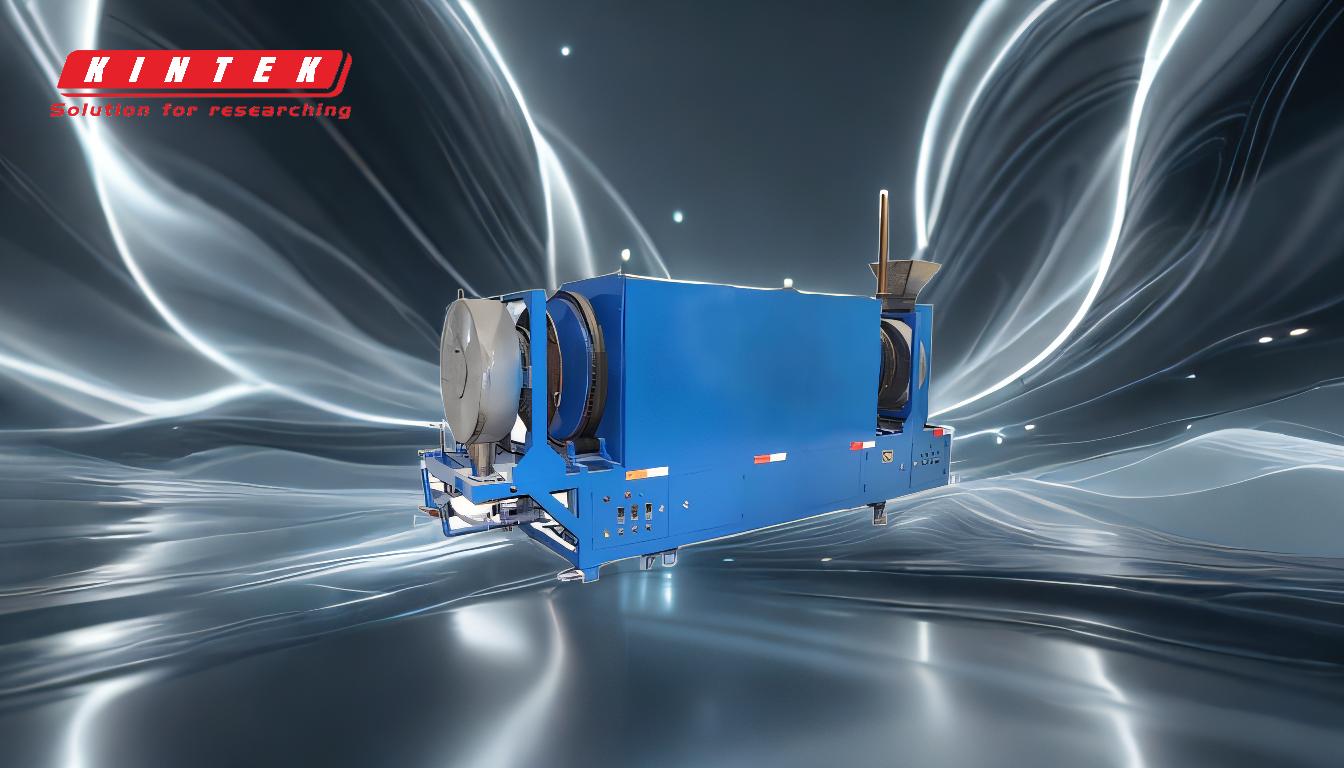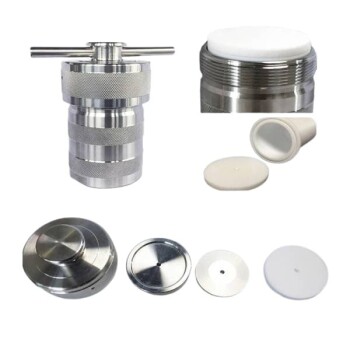Pyrolysis is a thermochemical process that decomposes organic materials at high temperatures in the absence of oxygen, producing biochar, bio-oil, and syngas as primary outputs. The process involves several stages, including pre-treatment of the feedstock, pyrolysis in a reactor, and post-treatment to separate and refine the byproducts. These byproducts can be used for energy recovery, with syngas serving as a fuel source and biochar as a solid fuel or soil amendment. The process is versatile, applicable to biomass, plastics, and other organic waste, and plays a significant role in waste-to-energy conversion and resource recovery.
Key Points Explained:

-
Definition and Mechanism of Pyrolysis:
- Pyrolysis is a thermochemical decomposition process that occurs at high temperatures (typically above 430°C or 800°F) in the absence of oxygen.
- It breaks down organic materials into smaller molecules due to the thermal instability of their chemical bonds.
- The process is irreversible and involves simultaneous physical and chemical changes.
-
Steps in the Pyrolysis Process:
-
Pre-Treatment:
- Feedstock (e.g., biomass or plastic waste) is prepared by drying, crushing, and removing impurities.
- For plastics, this may involve shredding and separating non-plastic materials.
-
Pyrolysis Reaction:
- The pre-treated material is fed into a pyrolysis reactor and heated to high temperatures.
- In the absence of oxygen, the material decomposes into biochar, bio-oil, and syngas.
-
Post-Treatment:
- Biochar settles at the bottom of the reactor and is cooled.
- Gases and liquids are quenched to form bio-oil, while non-condensable syngas is recycled to the combustion chamber for energy recovery.
- Exhaust gases are cleaned to reduce harmful emissions.
-
Pre-Treatment:
-
Byproducts of Pyrolysis:
-
Biochar:
- A carbon-rich solid residue that can be used as a soil amendment or solid fuel.
-
Bio-Oil:
- A liquid product obtained from condensing pyrolysis vapors, which can be refined for use as fuel.
-
Syngas:
- A mixture of combustible gases (e.g., hydrogen, methane) that can be used as a fuel source for energy recovery.
-
Biochar:
-
Applications of Pyrolysis:
-
Energy Recovery:
- Syngas and bio-oil are valuable energy sources, with syngas being used directly as fuel and bio-oil refined for various applications.
-
Waste Management:
- Pyrolysis converts organic waste, such as biomass and plastics, into useful products, reducing landfill dependency.
-
Resource Recovery:
- Biochar can be used in agriculture to improve soil health, while pyrolysis oil can replace fossil fuels in certain applications.
-
Energy Recovery:
-
Types of Pyrolysis:
-
Biomass Pyrolysis:
- Focuses on converting agricultural residues, wood, and other biomass into biochar, bio-oil, and syngas.
-
Plastic Pyrolysis:
- Specifically designed to process plastic waste, producing pyrolysis oil, syngas, and residual char.
-
General Organic Waste Pyrolysis:
- Applicable to mixed organic waste streams, providing a versatile solution for waste-to-energy conversion.
-
Biomass Pyrolysis:
-
Advantages of Pyrolysis:
-
Environmental Benefits:
- Reduces greenhouse gas emissions by diverting waste from landfills and producing renewable energy.
-
Economic Benefits:
- Creates valuable byproducts (biochar, bio-oil, syngas) that can be sold or used on-site.
-
Scalability:
- Can be implemented at various scales, from small-scale rural applications to large industrial facilities.
-
Environmental Benefits:
-
Challenges and Considerations:
-
Feedstock Quality:
- The efficiency of pyrolysis depends on the quality and consistency of the feedstock.
-
Energy Input:
- The process requires significant heat input, which must be balanced against the energy output of the byproducts.
-
Technology and Costs:
- Advanced pyrolysis reactors and post-treatment systems can be costly to install and maintain.
-
Feedstock Quality:
By understanding the pyrolysis process and its byproducts, stakeholders can make informed decisions about implementing this technology for waste management and energy recovery. The versatility and environmental benefits of pyrolysis make it a promising solution for sustainable resource utilization.
Summary Table:
| Aspect | Details |
|---|---|
| Definition | Thermochemical decomposition of organic materials at high temperatures. |
| Key Steps | Pre-treatment, pyrolysis reaction, post-treatment. |
| Primary Byproducts | Biochar, bio-oil, syngas. |
| Applications | Energy recovery, waste management, resource recovery. |
| Types | Biomass pyrolysis, plastic pyrolysis, general organic waste pyrolysis. |
| Advantages | Environmental benefits, economic benefits, scalability. |
| Challenges | Feedstock quality, energy input, technology costs. |
Discover how pyrolysis can transform your waste into valuable resources—contact us today!











